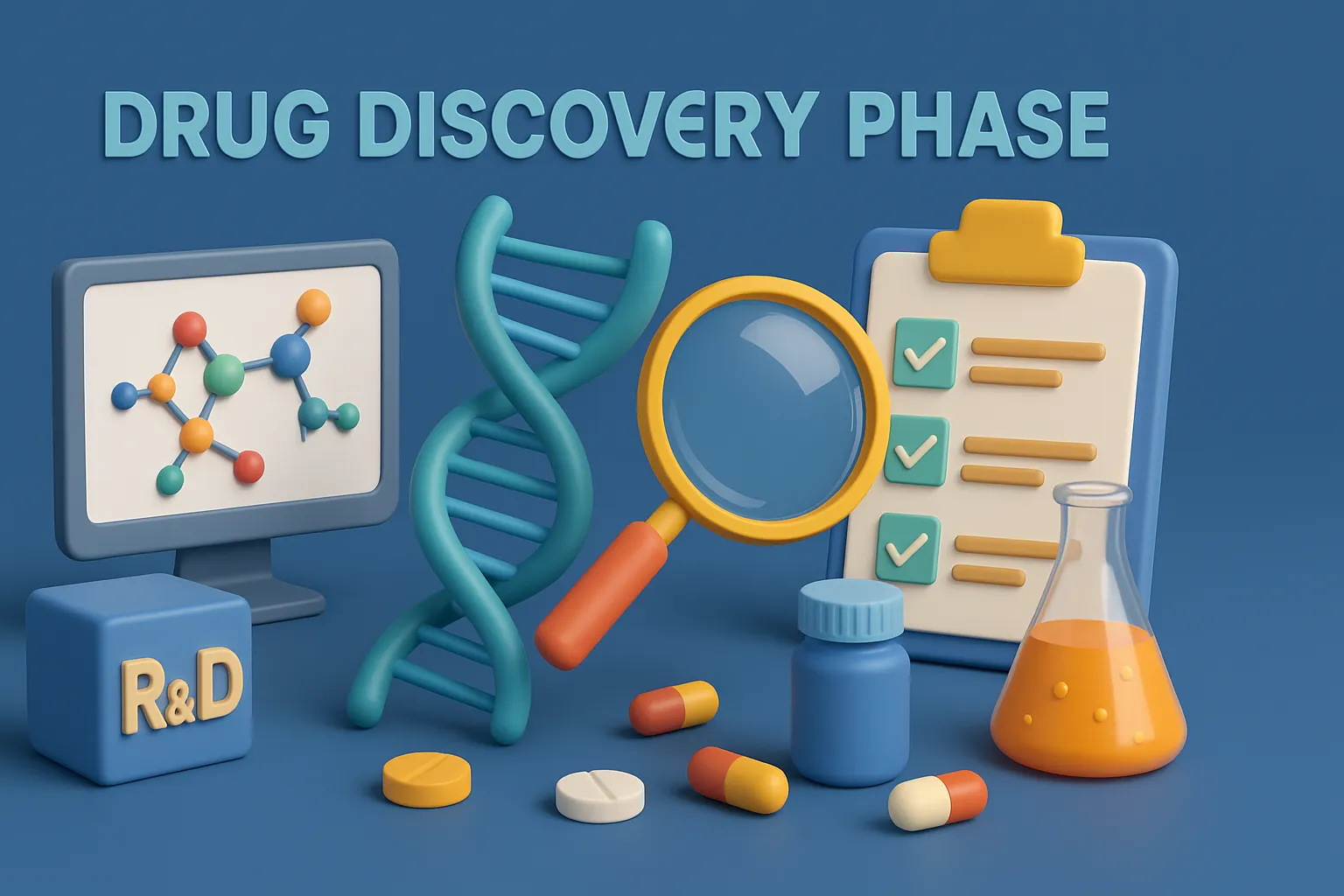Drug discovery phase involves identifying and designing new drug molecules with potential therapeutic effects.
This is the initial stage in developing a new drug, focused on identifying compounds that could become safe and effective medicines.
Key Steps for Drug Discovery Phase:
-
Target Identification and Validation
- A target is usually a protein, enzyme, or receptor involved in the disease.
- Scientists study the disease to identify and validate a target.
- Validation confirms that modifying this target can influence the disease.
-
Lead Compound Identification
- A lead compound is a molecule with potential therapeutic effects.
- Identified through:
- High-throughput screening (HTS): Testing thousands of compounds automatically.
- Natural sources: Such as plants, microbes, or marine organisms.
- Computer-aided drug design (CADD): Using software to design target-specific molecules.
-
Lead Optimization
- Chemical modifications are made to improve:
- Potency – how effectively it works
- Selectivity – acts only on the target
- ADME – absorption, distribution, metabolism, and excretion
- Safety profile
- Chemical modifications are made to improve:
-
Patent Filing
- Promising compounds are patented to secure intellectual property before further testing.
Click Here to Watch the Best Pharma Videos

